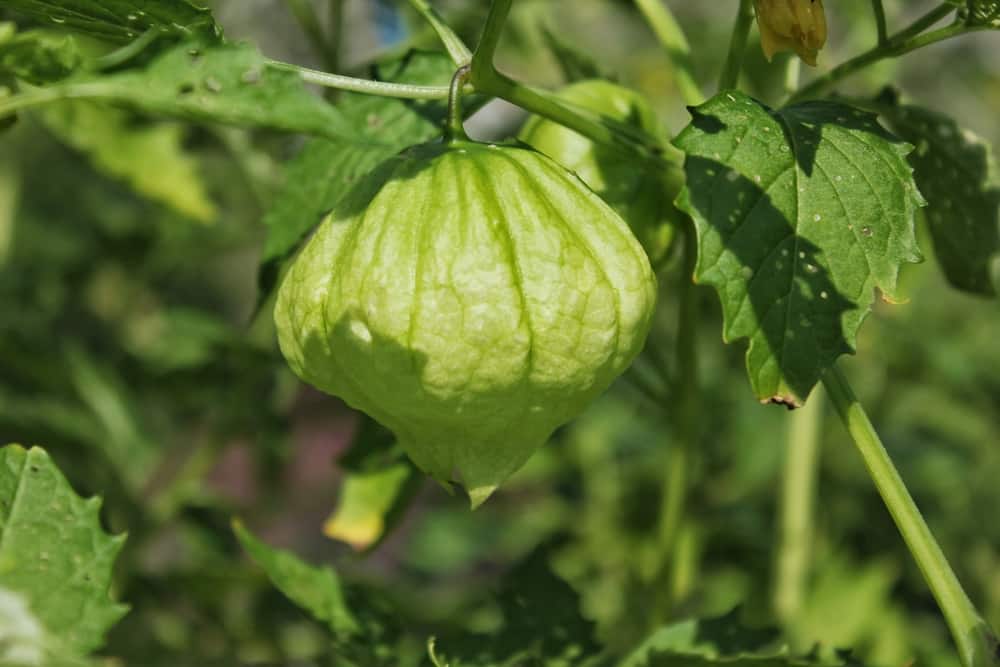
Tomatoes are one of the most used vegetables in our kitchens. We all know them as the red round vegetables but do you know about tomatillos? These are known as small tomatoes and are also confused with tomatillo vs milpero. Truth be told, it can be challenging to differentiate between these two and we are sharing more details on the matter!
Tomatillo Milpero vs Tomatillo
Tomatillo
These are small and spherical fruits that look like small tomatoes and have a green appearance. For the most part, they are used to add a burst of flavor and color to the recipe. In fact, in Spanish, tomatillo means little tomato. This plant originated from Mexico and belongs to the nightshade family of plants. These tomatillos can be consumed in cooked or raw form and are widely associated with salsa verde (the spiciest and tangiest salsa you can ever try!).
If you are confused if they are tomatoes, that’s not the case because they aren’t the same. For the same reason, you cannot substitute them for each other. These little fruits are covered in a paper-like husk that needs to be peeled away for using them. In addition, they have different textures and flavors. When ripe, tomatillos are firm and can be added to various recipes. When it comes down to flavor, it has slight earthy tones with subtle fruit flavor while tartness and sweetness are the major flavor profiles.
In raw form, tomatillos have an acidic nature but the cooked ones tend to be milder. In the ripe form, they are green, and if they are not plucked, the husk starts splitting and turns purple or yellow. However, the tomatillos will be ready to eat when the husk starts splitting open from the bottom side. These are easily available during the early fall and late summer season and you can find them at the farmers’ market or grocery store.
It is suggested to opt for the tomatillos with fresh husks and don’t opt for the ones with a sticky or soft texture. These little fruits can be stored in the fridge as well as the room temperature. However, whenever you store them, make sure that you don’t remove the husk as it helps keep the tomatillos fresh for a longer time. In simpler words, you should only remove the husk when you are ready to cook them.
Milpero Tomatillo
Milpero tomatillos are the miniature form of tomatillo and look like small berries. They tend to be half the size of tomatillos and measure around one to 1.5-inch in diameter. These mini tomatillos are likely to have a more concentrated flavor but the acidity will be pretty less. In addition, it has a slightly sweet flavor. This is a small fruit with a firm texture and has small seeds in a pale color. Also, just like tomatillos, they also have an exterior husk.
In the majority of cases, milpero tomatillos have a green appearance but some of them have a streak of purple color. These small tomatillos grow on two-foot to three-foot-tall plants and produce a great yield of tomatillos. They are a staple in Mexico and can be grown in the Western Hemisphere. These tomatillos have been around since 800 B.C. and are more common in warmer climates, especially when the cornfields are around.
As we have already mentioned, they are half the size of their bigger cousin, which leads to a more concentrated flavor. When it comes down to the name, they are called milpero tomatillos because they are grown between different rows of corn in the milpas (the milpas are known as cornfields). When shopping for the milpero tomatillos, make sure that you are purchasing the firmer ones with dry covering (yup, the husk).
On the other hand, make sure that you don’t buy shriveled and bruised fruits because it doesn’t look nice in the recipe and the flavor will be compromised too. These tomatillos can be stored in the refrigerator for over one month but try to put them in a paper bag to keep them fresh. All in all, they can be used in salsa as well as other sauces.
To summarize, tomatillos and milpero tomatillos are two commonly found fruits to add an extra punch of flavor to Mexican cuisine. However, you can use the latter if you need a higher punch of flavor.